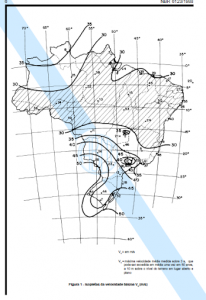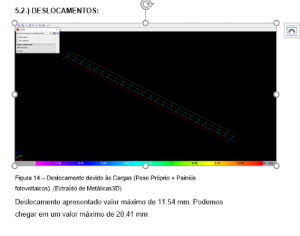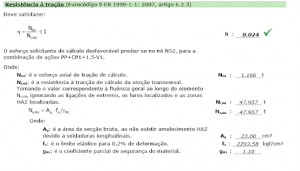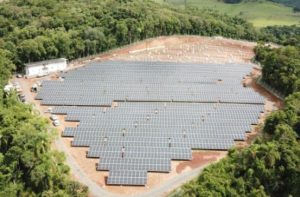Manufacturers of metallic structures for fixing photovoltaic modules must design the materials in accordance with the limits and conditions of ABNT technical standards, in addition to international standards, among which we can highlight:
ABNT NBR 8800 – Design of steel structures and mixed steel and concrete structures for buildings
ABNT NBR 14762 – Design of steel structures made up of cold-formed profiles
ABNT NBR 6123 – Forces due to wind in buildings
ABNT 6122 / 2019 – Design and execution of foundations
EUROCODE 9: Design of aluminum structures – Part 1-1: General structural rules.
In the case of ground structures, they must be designed in accordance with ABNT NBR 8800 and ABNT 6123 – Forces due to wind in buildings and previously mentioned standards.
The project must take into account the strength of the wind to which the structures are subject. Figure 1 shows the isopleth graph (wind speed curves) found in the NBR 6123/1998 standard. Figure 2 demonstrates how calculations are made based on NBR 6123, to find the incident wind load in each region of Brazil.


It is always recommended to ask the structure supplier for a calculation report for the products, so that the customer can be sure of having structures that will withstand the action of the wind.
The design must be guided by the NBR 8800 / 14762 standard and must also be carried out with the support of structural analysis software, to carry out the analysis of maximum displacements, which must comply with Annex C of NBR 8800 and Annex A of NBR 14762 :2010.

In Figure 3, a soil structure was designed for 120 modules. The objective of the study, carried out using Metálicas 3D software, was to analyze the displacement due to loads (own weight + photovoltaic panels). The maximum displacement obtained was 11.54 mm, while the normative limit would be 20.41 mm.
In addition to the need to use sizing tools and observe technical standards, with all calculations presented in the memorial, attention must be paid to the quality of the materials used. SSM Solar, for example, uses 6000 series structural aluminum. Figures 4 and 5 illustrate excerpts from a structural calculation report produced by SSM Solar.


After reading the standards and calculating with software tools, the profiles are manufactured. All of these procedures are necessary and must be carefully respected until the structure is delivered to the customer. The correct design of the structures ensures that the customer has no surprises during the construction and commissioning of the solar plant.
Figures 6 and 7 illustrate a ground plant built with SSM solar structures, which have undergone all design and structural analysis procedures, ensuring maximum safety of the work and return on investment for the client.


In addition to all the care taken with design and manufacturing, it is important to check the warranty provided by the manufacturer. A SSM Solar do Brasil, for example, based on all the calculations and all the checks presented and carried out by an engineering team, offers a 30-year warranty for the structures, a time compatible with the life expectancy of the photovoltaic modules.
Finally, it is important to check whether the supplier monitors the on-site assembly process of the structures, providing all the necessary support for the development of the process.
















3 Responses
Dear Eng° Gustavo,
Congratulations to you and SSM for your work.
I suggest you publish a technical article demonstrating the design of concrete blocks for anchoring, without fixing (parabolt/glue), in flat slabs of the support structure for photovoltaic modules.
Thanks,
Good afternoon!
Engº Gustavo, very good material on the structure of photovoltaic panels. This reminds us to be careful with the structures that support photovoltaic panels, especially in power plants, which generally have a number of larger panels and are located on land with a lot of sand (soft earth). I would like to congratulate you and know if there is a more detailed article on the topic.
Grateful.
Electrical Engineer Fábio Serra
Congratulations to Eng. Gustavo Lopes for warning about the loads incident on structures due to the placement of photovoltaic panels that are installed on existing structures.
As the panels are “light”, we have spread the concept that existing structures “support” them.